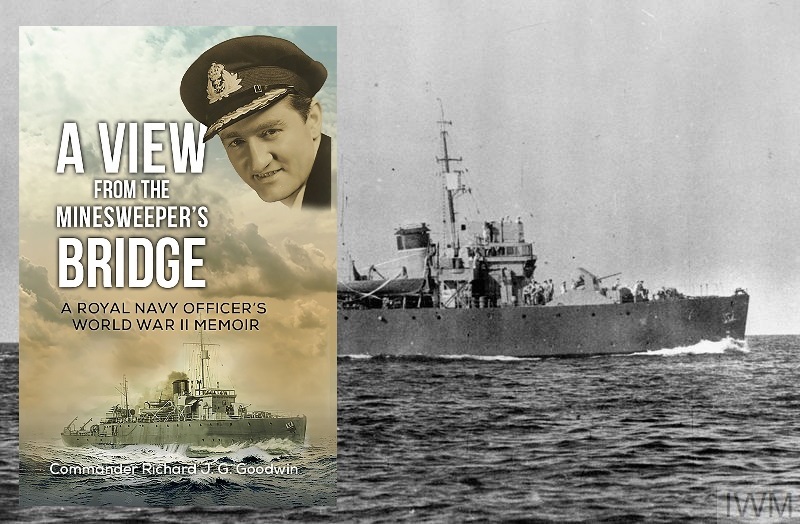The children of OH Richard Goodwin (Ha 27) have recently published their late father’s memoir A View from the MInesweeper’s Bridge, which tells of his wartime experiences in one of the most dangerous areas of warfare – the detection and desctruction of hidden magnetic mines. Now the book has been reviewed in The Naval Review by Andrew Welch, an Old Uppinghamian, the content of which is given below in full.
Well written
This book was written as a family memoir and published posthumously by Cdr Goodwin’s children, with a smattering of their additions. It is very well written (as expected, given his education) and is an easy read. Having found a post-war career in South America and stayed on in retirement, unsurprisingly it is written in American and published in New York. With one exception (see below), there is nothing unusual, or unexpected, about his account of life in a small ship in WWII here.
An “Empire Route” education
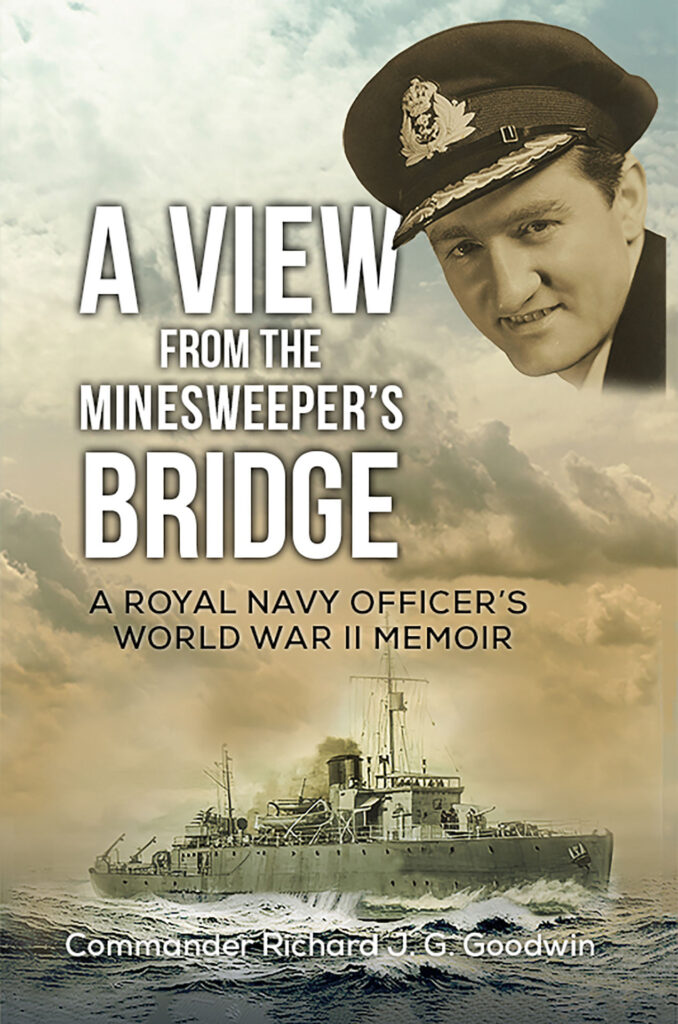
Goodwin was born in Persia in 1913. His father was the Manager of the branch of the Imperial Bank of Persia in Qazvin, a couple of hours NW of Tehran and, inevitably, the British Consul for the area.
From the age of six, Goodwin’s education took the classic ‘Empire’ route. He was put into a pre-preparatory school, established specifically for the children of ex-Pats, in Buckinghamshire.
At nine, he progressed to a Norfolk prep school and at thirteen, he joined Haileybury and Imperial Service College. Goodwin would have seen his parents every three years, or so, when they had leave from Persia.
The lure of the sea
He didn’t much like Haileybury and at the age of sixteen managed to get away and joined HMS Conway. Two years later, he took an interview with the Pacific Steam Navigation Company and was accepted for a two year apprenticeship as a deck cadet. He was assisted in his moves from Haileybury and into the PNSC by another ‘uncle’ who had been senior in his father’s bank.
Perhaps not co-incidentally, his interview with PNSC’s Marine Superintendent was very brief – “Stand up, turn round, sit down. Well, I see you have a head, two arms and two legs. That’s all I need.” As this was at the depth of the Great Depression, with 2.7 million unemployed in the UK, influence was very valuable in getting him started on his career.
Joining the Royal Naval Reserve
After a couple of years on the South America run, he took his Second Officer’s exams and in 1933 he joined the RNR. He was straight back to the PNSC and was in Buenaventura, in Colombia, when war broke out. His ship was directed northwards to Halifax and then joined the first convoy across the Atlantic. Meanwhile, his wife to be was persuaded to leave the safety of Chile and to come to the UK to marry him.
Blowing up mines
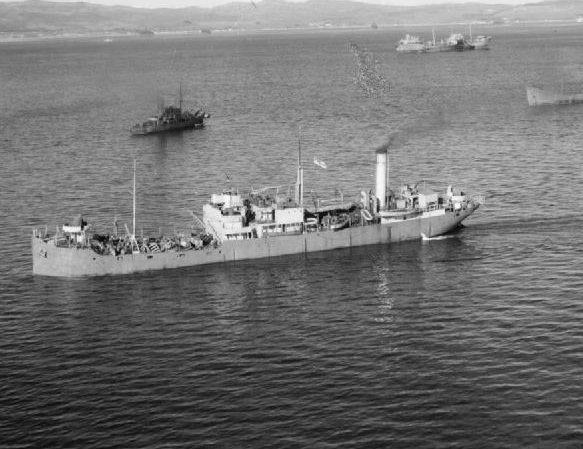
On arrival in UK, Goodwin was called up, given a short gunnery course and on Jan 8th joined HMS Borde (left) as Navigating Officer. HMS Borde was was an old 2000-ton coaster fitted with a 400-ton electromagnet to become a ‘mine detector vessel’ – which was as alarming as it sounds.
Magnetic mines were, at the time, a little-understood, but very high priority, threat and Goodwin recounts vividly the early days of finding out exactly how the German magnetic mines worked. Her task was to set off magnetic mines far enough ahead (50 yards was the best guesstimate) of the ship to detonate them, without causing too much damage to the ship.
Goodwin’s account of this first attempts at clearing magnetic mines is excellent and well worth reading the book for. Needless to say, the damage to Borde was extensive and, fortunately, a towed magnetic sweep was swiftly developed. They were usually escorted by a small trawler, whose task was to pick up survivors…..
Minesweeping and medals
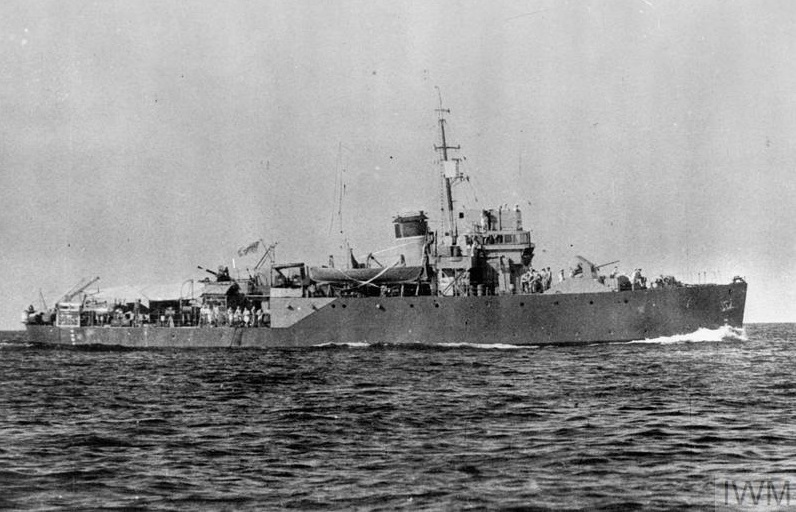
In late 1941, Goodwin was appointed to HMS Whitehaven (right), a fleet minesweeper, under construction in Philips’ yard in Dartmouth. He took part in the North African landings and was then appointed to the staff of one of the minesweeping groups preparing for D-Day. He was also awarded the DSC and other medals for his services.
In 1944, he was selected, as a Spanish speaker, to tour South America, giving talks on the war, finally returning to the UK aboard the RMS Queen Elizabeth from New York.
South America by chance
He made several useful contacts during his South American tour and so, on being demobilised, moved to Peru and took up a job in shipping management. He remained in South America until his death at the age of 99.
This book is a interesting account of life as an ex-Pat Brit in the last century – your reviewer in only 35 years younger than the author and recognises much of the way of life. From the naval point of view, the section on early minesweeping is fascinating – the risks were truly horrifying.
The book review was taken from The Naval Review and is used with their permission.
(Images: courtesy of the Imperial War Museum)
About the book
A View from the Minesweeper’s Bridge by Richard Goodwin is published by Austin Macaulay Publishers
ISBN: 978-1647500443
RRP: £9.99 (Paperback; other formats also available)
A View from the Minesweeper’s Bridge is available through Amazon here
More from The Haileybury Society
- Never In Our Comfort Zone – Challenge Complete
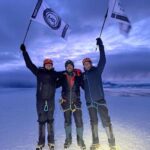
- Weekly Watercolour Classes with John Hill (K 63)

- Oscar Lock (BF 13)
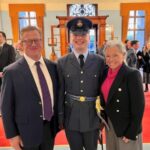
- Haileybury Connections In Uganda

- Now Published – The Haileybury Society Annual Report 2025

- Haileybury Rackets – A Proud Sporting Heritage
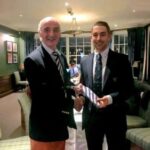
Unless otherwise stated, all content and images on this website and blog © The Haileybury Society, 2024, all rights reserved
Search stories by date
Unless otherwise stated, all content and images on this website and blog © The Haileybury Society, 2024, all rights reserved
